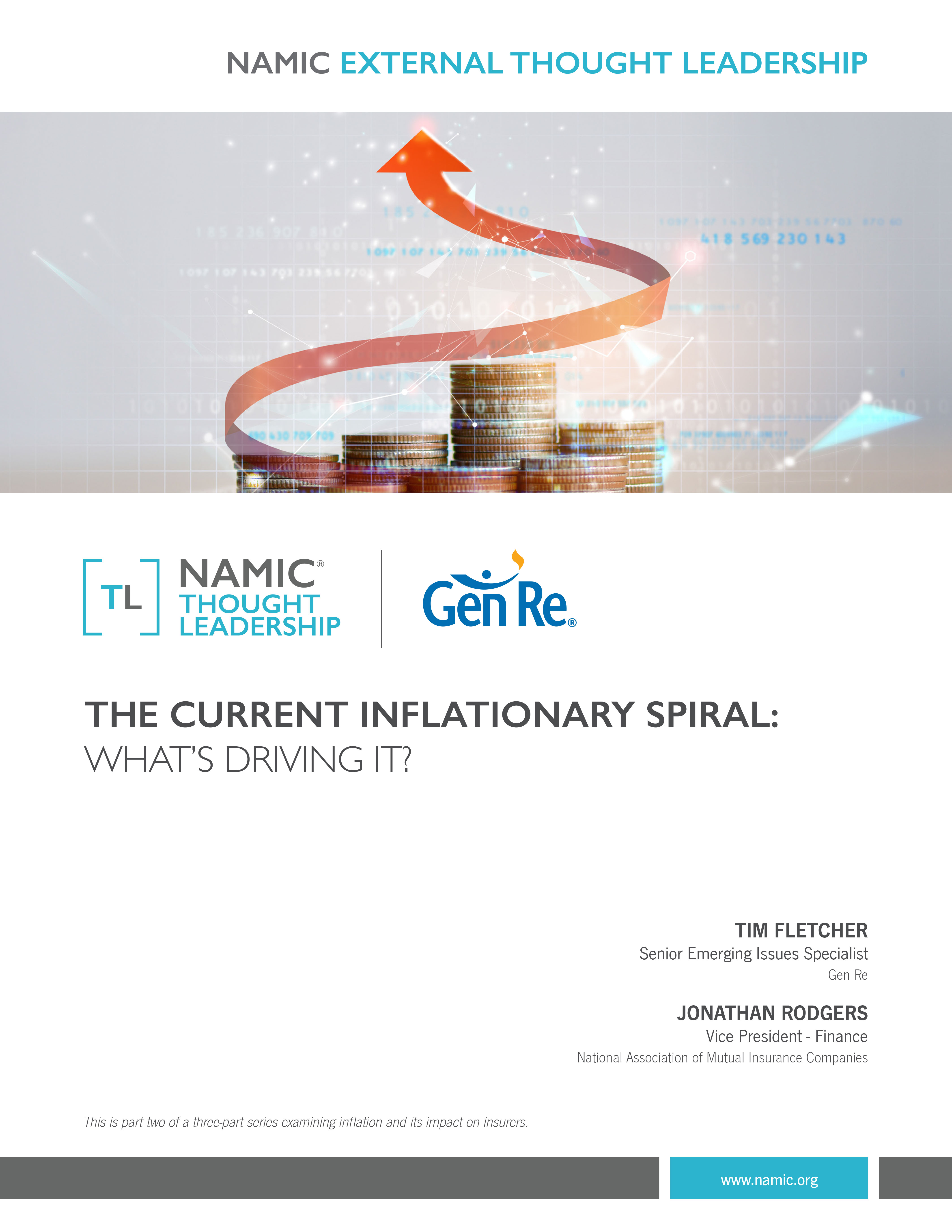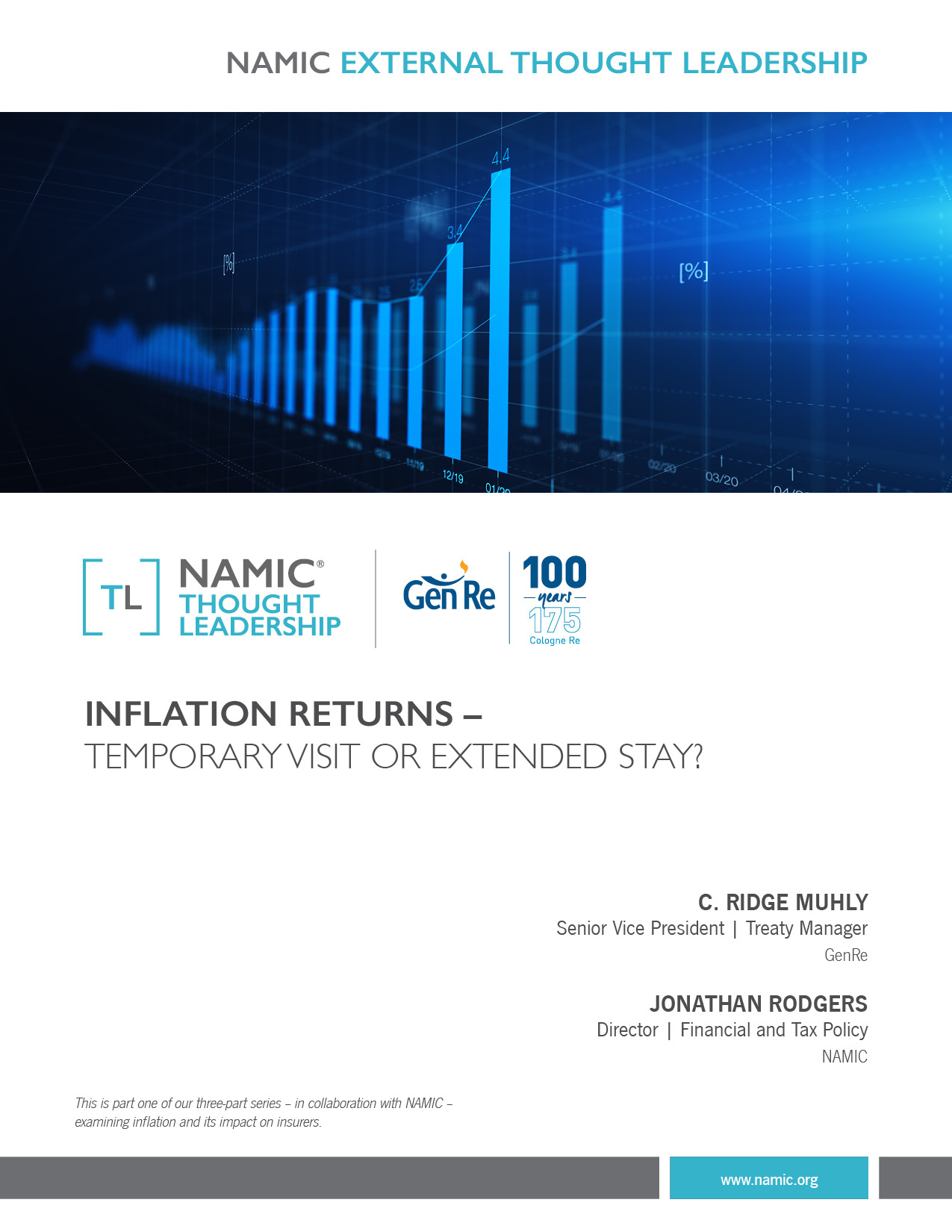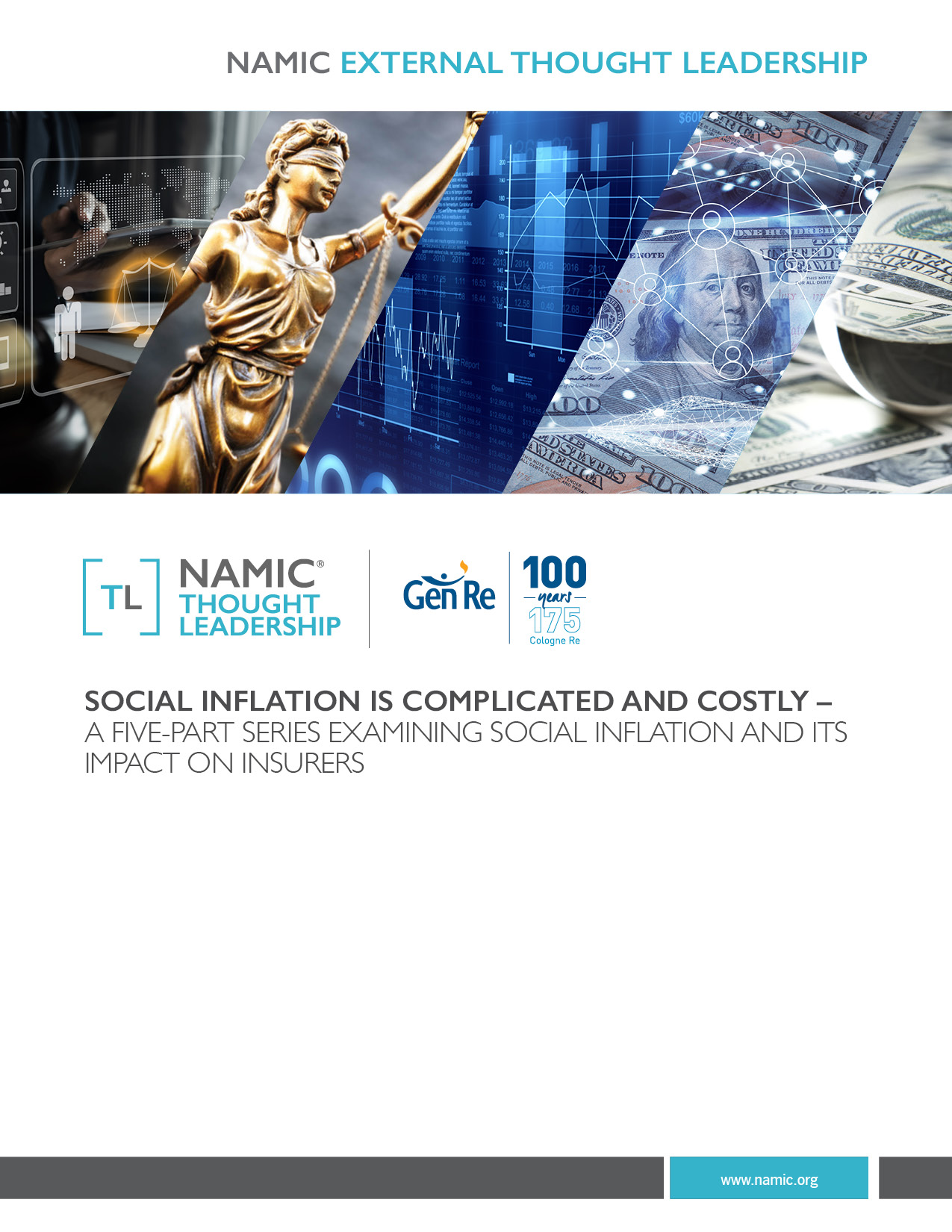External Thought Leadership
Scenario Testing Our Mutual Future – Year Three(PDF)
For the third consecutive year, NAMIC has partnered with Guy Carpenter to model the impact of risk scenarios on the mutual insurance industry: severe weather, financial crisis, and stagflation. We hope this exercise brings to light some of the key risks facing our members today and facilitates a discussion on the impact of various risks to which an insurance company is exposed. We encourage each company to examine how the hypothetical scenarios described herein would affect operations; communicate proactively with your boards on the range of potential outcomes; and connect with Guy Carpenter for further actionable insights specific to a company’s unique circumstances.
(Published 02/28/2024)
Scenario Testing Our Mutual Future – Year Two(PDF)
As industries around the globe face growing political, economic, and environmental challenges, the mutual property/casualty insurance industry remains a strong and vital pillar of the economy.
To understand the effects of current market forces on the mutual insurance industry, NAMIC and Guy Carpenter have collaborated to provide prospective risk assessments across a range of realistic scenarios of concern for the industry: increased hurricane severity; elevated severe convective storm activity; a large scale cyber event; inflation; and stagflation.
The report assesses how different risk exposures affect financial results, a key mandate for leaders of today's mutual industry as the market focus has shifted from return on capital to return of capital. Managing across sources of risk to grow and protect business while simultaneously maximizing value for policyholders is the inherent challenge for any mutual insurer, and NAMIC is proud to provide the tools to help members stay ahead of risks on the horizon.
(Published 03/07/2023)
The Current Inflationary Spiral: What’s Driving It?(PDF)
As we moved through 2022, it became increasingly clear the inflationary pressures seen in 2020 and 2021 had settled in for an extended stay. Consumers and businesses scrambled to compensate for skyrocketing costs and inflation levels not seen since the early 1980s. Analysts and commentators warned that the “zero inflation” era seen over the previous decade had come to an end. Now, with some signs suggesting that inflationary pressures have somewhat stabilized for many sectors of the market, it’s instructive to examine what’s been driving them.
This is part two of our three-part series – in collaboration with Gen Re – examining inflation and its impact on insurers.
(Published 02/08/2023)
Inflation Returns – Temporary or Extended Stay? (PDF)
Among the many cascading events that COVID-19 presented to the American people – the infusion of trillions of dollars of federal government COVID-relief spending into the economy, the ongoing supply chain disruptions, and the continued labor market struggles – have all played a large role in contributing to the high inflationary environment currently impacting the U.S. economy. The return of long-dormant inflation ends what many have called the “free money” era in which inflation and interest rates hovered around zero. Consumers are suddenly feeling the pinch at the grocery stores, gas pumps, and in other consumer goods.
The insurance industry now finds itself in a morass of soaring automobile and building material costs, labor shortages, and supply chain struggles, as well as dealing with several outsized and out-of-season extreme weather events, all while inflation outpaces premium increases.
As we approach 2023 with the tangible and intangible impacts of inflation’s unwelcome return continuing to be felt, the question is whether this inflationary era is only temporary, or will it prove to be long lasting? If the latter, how will the insurance industry be affected and what can be done to minimize the impact?
This is part one of our three-part series – in collaboration with Gen Re – examining inflation and its impact on insurers.
(Published 08/15/2022)
Scenario Testing Our Mutual Future (PDF)
In a world forever changed by the COVID–19 pandemic, mutual property/casualty insurance companies of all sizes are facing increasing pressure from stakeholders to consider the impact of systemic scenario testing on their financial forecasts. Understanding how the many different scenario tests can impact their financial performance is critical to their long–term strength and stability, which, in turn, is critical to each mutual company’s ability to serve its policyholders.
In support of this consideration, NAMIC and Guy Carpenter have collaborated to develop a series of reports designed to measure the exposure of each U.S. property/casualty (P/C) insurance company to a set of pre–defined operating environments. From 2021 through 2023, the two will investigate how various scenarios, expected and unexpected, will impact mutual companies.
(Published 12/8/2021)
Social Inflation is Complicated and Costly – Five Perspectives to Help Insurers Identify Trends and Respond (PDF)
Since the term social inflation first emerged in the 1970s, it has grown and expanded into a catch-all of sorts to describe a host of deleterious cost-drivers that involve litigation and that chip away at insurers’ books of business, increase their operating costs, and eventually metastasize in the form of higher premiums for policyholders. Unusually large or so-called nuclear verdicts catch our attention, but the underlying causes are broader and deeper. Many of these cost-drivers have existed in some capacity for decades, yet the past several years have demonstrated that the insurance industry really needs to understand the social inflation landscape so we can begin to address it.
(Published 9/20/2021)







